The late great photojournalist Chris Hondros, in his own words and images
You hear Chris Hondros before you ever see him, as he calmly takes a call as though it were any other day in the office. And for the late Getty Images photographer, it was. The battlefield was where Hondros worked, where his photographs came to sharply define some of the bloodiest conflicts of the last 15 years, including the wars in Iraq and Afghanistan. It would also be where he ultimately lost his life, killed in a 2011 mortar attack along with fellow photojournalist Tim Hetherington while covering the civil war in Libya nearly seven years ago.
But on this day in 2003, Hondros was in Liberia, answering his phone as he walked down the street with young militia members who were barely high school age but were now on the frontlines of a deadly civil war. In the chaotic footage that opens “Hondros,” a documentary about the photojournalist’s life and work which opens in select theaters this week and begins streaming online March 6, the photographer takes the phone call off camera, reassuring the person on the other end that all is well — even as his words are nearly drowned out by rapid bursts of machine-gun fire and blasts in the not-too-far distance.
“Things are fine,” Hondros casually tells the caller, his voice the very definition of ease. “Give me a call back in about half an hour.”
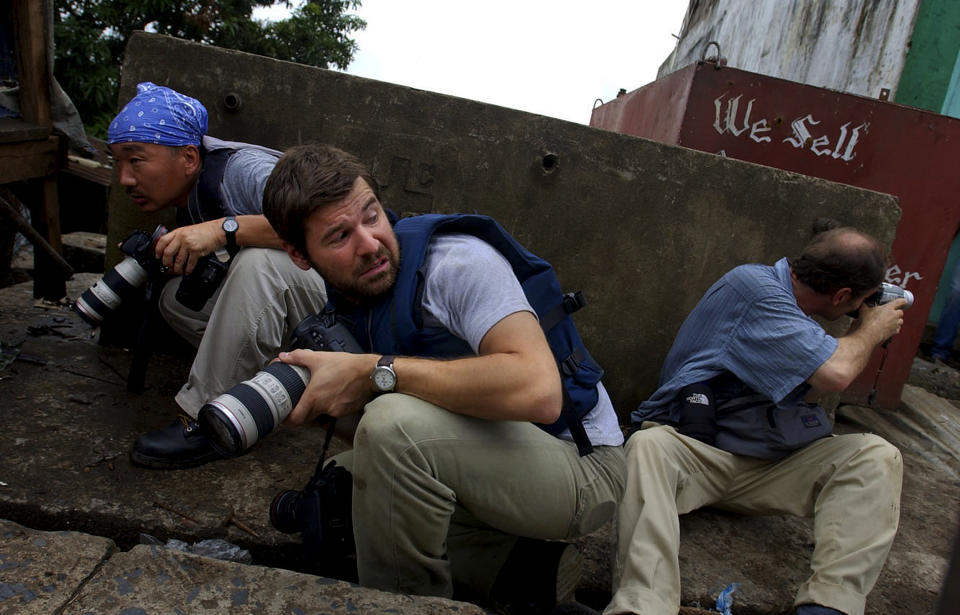
It’s only then that the viewer sees Hondros come into frame, camera in hand, calmly documenting the chaotic scene in the Liberian capital of Monrovia where militia members were squaring off against rebel forces determined to overthrow then Liberian President Charles Taylor. Even as other journalists began to turn back amid fear of escalating violence, Hondros continued on toward a bridge where some of the fiercest fighting was underway, crouching as bullets whizzed through the air. Within minutes, he took one of his best known photographs — an image of a young militia commander leaping ecstatically into the air, drunk on the glory of war, after firing off a rocket-propelled grenade toward rebel forces. The picture, a finalist for the 2004 Pulitzer Prize, is considered one of the most iconic images of modern war photography.
It was the story behind that photograph that was the genesis of “Hondros.” Greg Campbell, a journalist and filmmaker and author of the book “Blood Diamonds,” had grown up with Hondros in North Carolina and was the photographer’s best friend. While mourning his death, Campbell was surprised to receive a Facebook message from Joseph Duo, the young Liberian immortalized in Hondros’s photo, who told him of the larger role the photographer had played in his life.
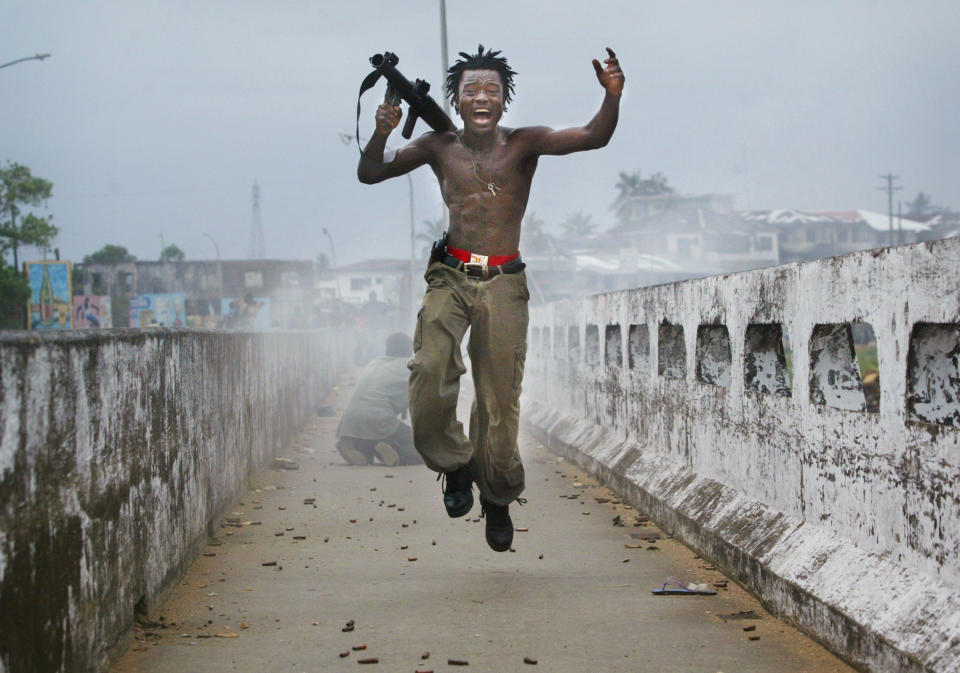
Slideshow: Chris Hondros’s life and pictures highlighted in documentary, ‘Hondros’ >>>
In 2005, during a return trip to Liberia, Hondros finally met Duo, learning his name for the first time and his backstory. Duo, then 28, had dropped out of school in the 10th grade to go to war. Living in poverty with his wife and three kids, he told Hondros he was trying to go back to school in hopes of pursuing a better life, but it wasn’t easy for someone his age.
To Duo’s surprise, the photographer helped him enroll in school and paid the tuition, hoping that would allow the man to choose his own fate. The two subsequently kept in touch over the years, as Hondros reviewed Duo’s report cards and encouraged him to persevere. When Duo graduated from high school and enrolled in college classes in computing and criminal justice, Hondros continued to pick up some of the costs —though he told almost no one, including Campbell.
“I always knew that Chris made friends easily and kept them close at hand and really kind of cultivated his relationships but … I had no idea the actual scale of the impact that he had on people,” Campbell said.
Inspired to tell the story of his friend’s legacy and generosity, Campbell launched a Kickstarter campaign to finance a film about Hondros’s most famous photos and his personal and professional impact on his subjects and others who came to know him. The project found important backers in actors Jamie Lee Curtis and Jake Gyllenhaal, who eventually served as producers. Four years later, the result was “Hondros,” which premiered last year at the Tribeca Film Festival one day after the sixth anniversary of the photographer’s death.
Exclusive clip from ‘HONDROS’
The filmmakers interviewed Samar Hassan, an Iraqi teenager who was photographed by Hondros in January 2005 moments after U.S. soldiers opened fire on her family’s car, killing her parents. The image of Hassan, then only 5, screaming and covered in blood, was one of the most powerful images of the Iraq war and one of the first to truly capture the horror of the conflict for the country’s civilian population.
Yet the most powerful footage in the film is of Hondros at work, captured in war zones via found footage from other journalists who were on the scene. He moves quickly and with precision, always watching and looking for the best angle, the most dramatic framing.
The film shows Hondros in action as he takes some of his most famous images, including in Iraq and Libya, where the footage includes shots of the photographer working right up to the final moments before his death. Campbell and his fellow filmmakers had put out an open call for any imagery of Hondros at work, resulting in “hours and hours” of footage that had to be drastically edited. As the footage plays, it is spliced with still images pulled from the Getty Images archive of the photos Hondros was taking at the time.
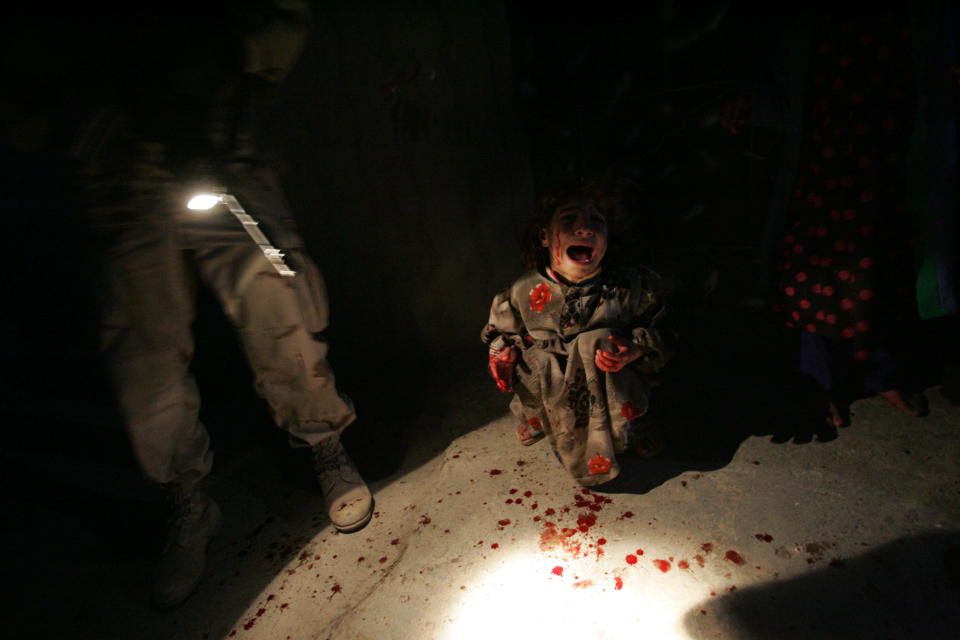
“Probably one of the most challenging things was to find that footage and kind of turn over every rock, but it was also one of the most fulfilling,” Campbell said. “One of the most pleasant surprises was that you could actually see him at work in his environment and literally in some cases with the video camera over his shoulder as he’s taking photographs that came to be pretty iconic and very well-known from the conflicts that he covered.”
At times, Hondros narrates his own story, speaking about his work and the importance of photojournalism through snippets of various television interviews conducted before his death. At one point, an interviewer asks Hondros to respond to a claim that war photographers are “the craziest” of all journalists.
“The problem with war photography is that there’s absolutely no way to do it from a distance,” Hondros replied. “You have to be close. You can’t do it from your hotel. You can’t do it from across the street, from across the bridge. You have to be there. There’s really no substitute for that. So you have to figure out ways to get into the midst of things, no matter what’s happening. And you have to suspend your reason sometimes to do that.”
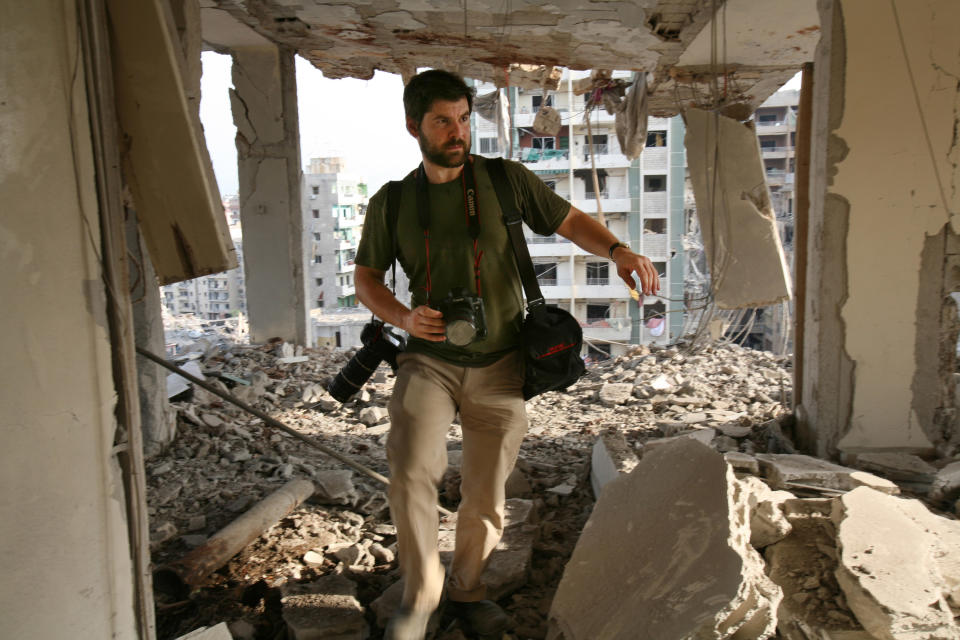
Campbell’s documentary comes at a difficult moment for journalism, especially for photojournalism. As print magazines and newspapers have scaled back or shut down, the ubiquity of smartphones has turned practically every passerby into a photographer, and professional photojournalists are finding it harder to make a living. And the wars they cover are growing increasingly brutal and dangerous.
While Campbell’s primary goal was to introduce viewers to his best friend, who was only 41 when he died, he also hopes “Hondros” will remind people of the importance of photojournalists, especially in covering combat in places like Iraq and Libya.
“Everybody with a phone on the planet can take a photo of what’s happening, but in order to take a photo that helps you understand it, it requires the skills and talents of a photojournalist,” he said. “Especially in this day and age where the very fabric of truth is being questioned from the highest levels … there’s no replacement for having experienced, skilled, well-trained people who know what they’re doing from a journalism perspective going into these environments, who are dedicating themselves and putting themselves at risk to come away with the truth or as close of an approximation as we can get to it.”
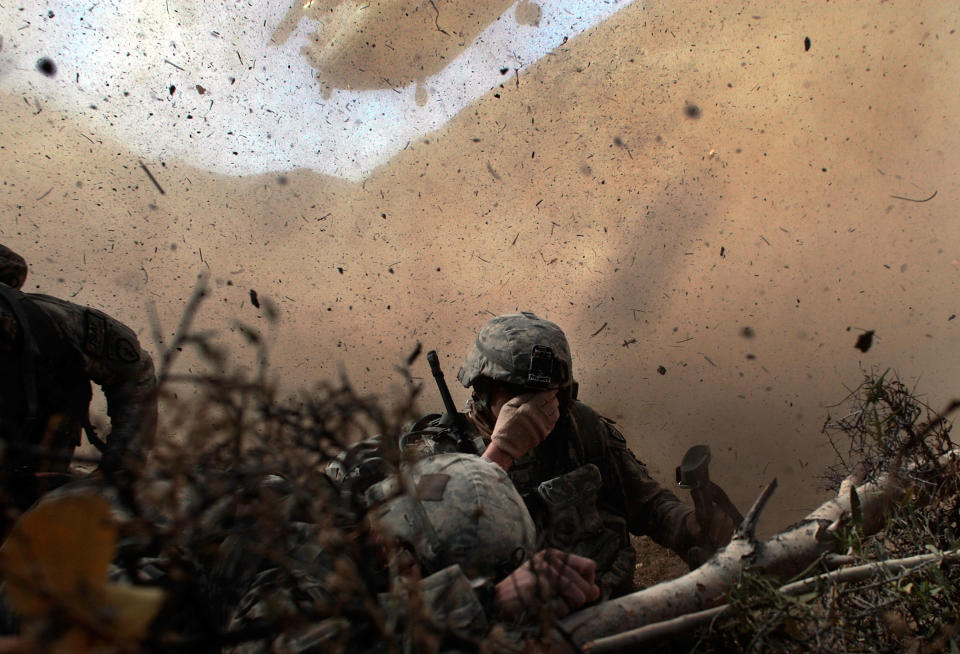
Throughout the film, it’s hard not to wonder what Hondros, who was just weeks away from getting married when he was killed, would be doing today. Many of the places he documented, including Iraq, are still being ravaged by deadly conflict. Campbell said it’s hard to tell where his friend’s life would have taken him, though he believes he would be on the frontlines somewhere, determined to show the horrors of war.
“One of his friends once said that his favorite photo of Chris’s was the one that Chris never got to take next,” Campbell said. “It’s interesting to kind of think about the possibility of what those photos might have been and the stories he would have been telling us.”
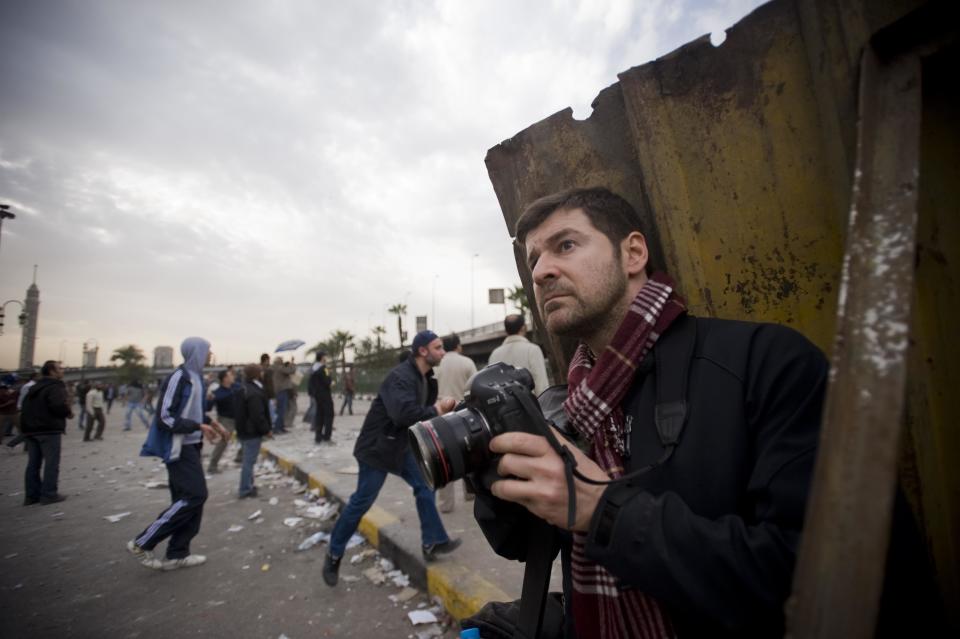
Cover thumbnail image courtesy of Scout Tufankjian.
_____
Read more from Yahoo News:
House Democrats seek 20 to 30 more witnesses in Russia probe, but GOP resists
Author Eric Metaxas, evangelical intellectual, chose Trump, and he’s sticking with him
Meet the teen girl behind the National School Walkout movement
Photos: Chris Hondros’s life and pictures highlighted in documentary, ‘Hondros’



